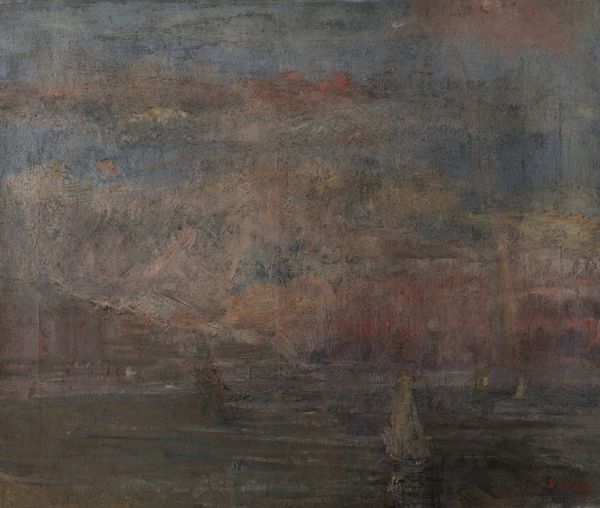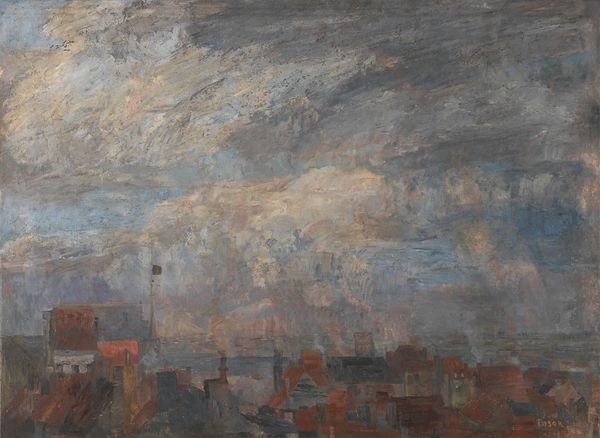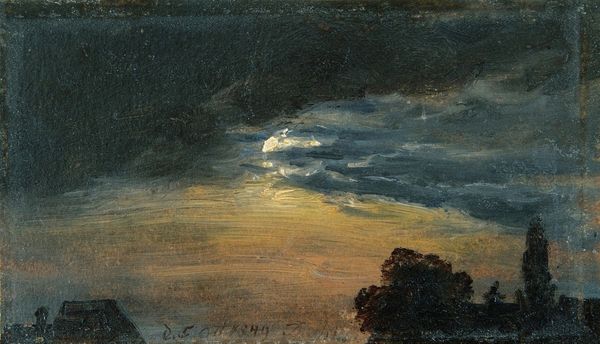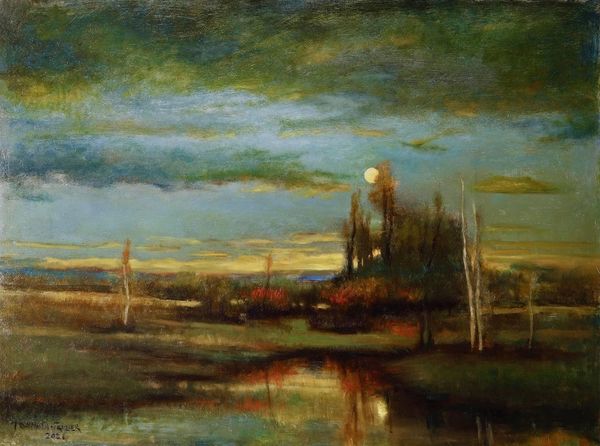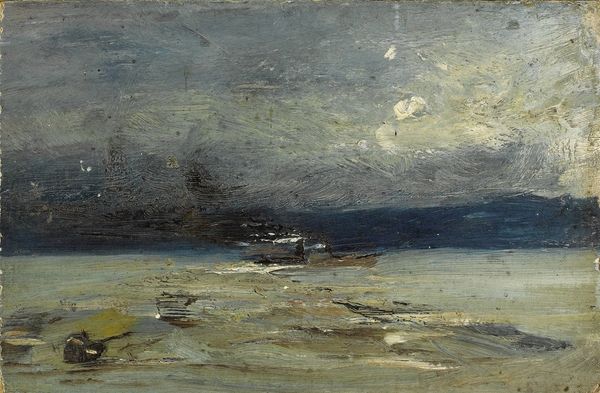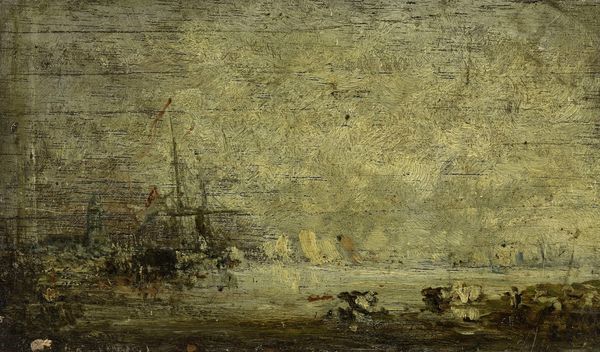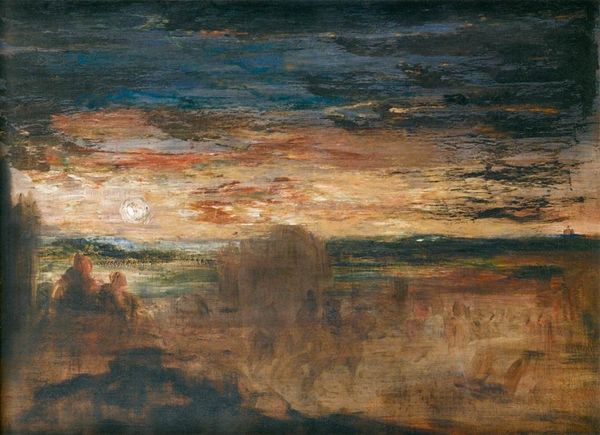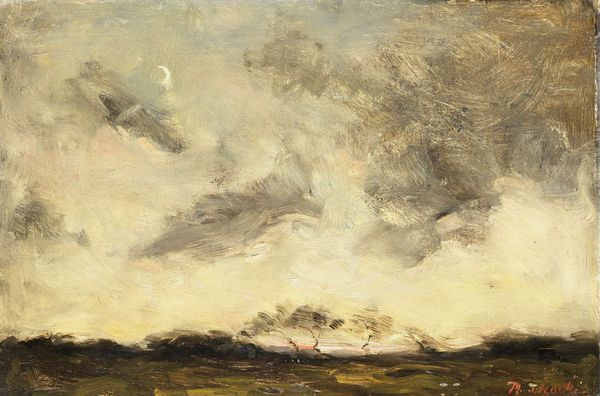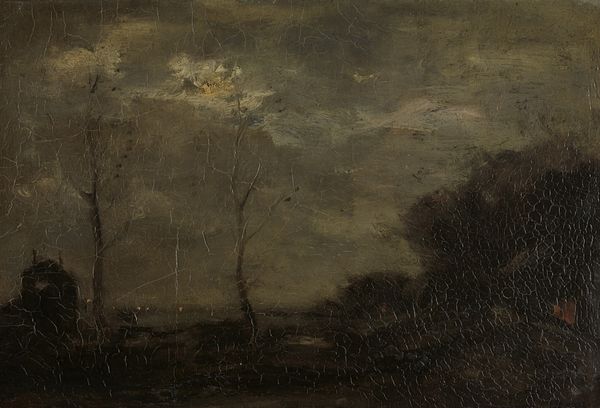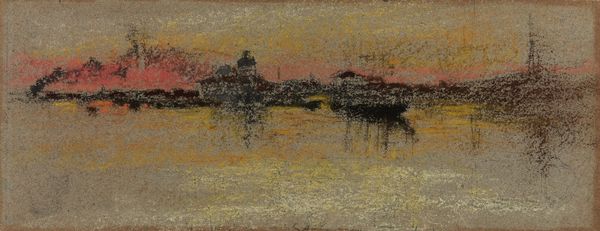
painting, oil-paint
#
night
#
painting
#
impressionism
#
oil-paint
#
landscape
#
cityscape
Copyright: Public domain
Editor: Here we have Eugène Boudin’s “Dusk over the port of Le Havre,” created in 1875 with oil paint. I'm really drawn to the way the muted colours create a melancholic and contemplative atmosphere, reflecting an industrialized, working port as a poetic nocturne. What symbols do you recognize here? Curator: Boudin has captured a pivotal moment in Le Havre’s history, the port serving as a major artery of trade and cultural exchange. Beyond its immediate representation, what of the setting sun, that celestial orb, half-veiled? Editor: I hadn’t considered the sun’s symbolic function! Curator: Note the ships' silhouettes: their bare masts suggest inactivity, invoking thoughts on voyages taken or those soon to be made, symbolizing transition and passage. Don’t you agree that they become more than simple boats here? Editor: Yes, now that you point it out, the silhouettes convey a feeling of expectancy, almost longing. The reflected moonlight softens the industrial port, and offers hope through its gentle, symbolic, promise of enlightenment. Curator: Precisely. And consider how dusk itself is liminal space, between day and night, known and unknown. It’s pregnant with possibility and echoes collective memories of departure and arrival, a common visual theme throughout centuries of port paintings, wouldn't you agree? Editor: I’m struck by how a seemingly simple cityscape carries so much historical and emotional weight. Thank you for revealing these cultural and personal symbols in such detail. Curator: And I've found a renewed appreciation for the layers Boudin weaves within what might at first appear a fleeting impression.
Comments
No comments
Be the first to comment and join the conversation on the ultimate creative platform.
